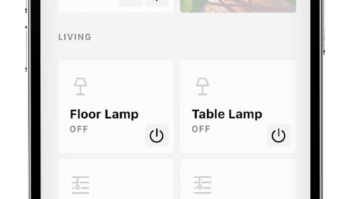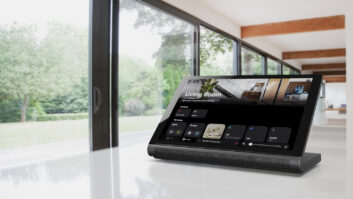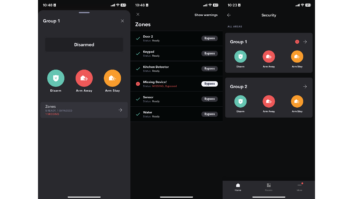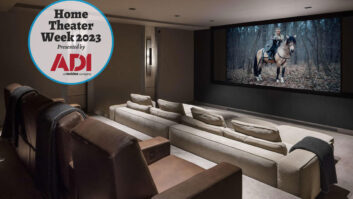Change is scary. We bought a house in 2013 and going from renting to owning is a scary experience. When people change jobs or careers, they are racked with anxiety for weeks or months. My friend’s young son is even nervous about the family getting a new car because “what if he doesn’t like it?” He’s 6 years old.
I was beyond nervous when I pivoted my business toward Crestron-quality projects. It was a total leap to go from multiple control systems, integrating differing brands, and being an AV integrator that basically dabbled in automation, to being an automation firm that also happens to do AV. But the change has been the best business decision I’ve ever made. Our revenue and profit from 2014 was three times anything we had ever done before.
The change has been so successful for me that I have been trying to get my two close colleagues to also reconsider their business strategies. Dan Ramos from Intelligent Automation jumped right in and became a Crestron dealer after spending some time at my home playing with my system and visiting the Crestron headquarters. Dan’s business is based around larger installs, and he and his partners come from the commercial side of the business. They also have a strong networking and telecom background and have embraced what Crestron could do for them. Part of the reason is that they know they can land jobs sizeable enough for a Crestron budget and that they have the networking expertise to build and own a rock-solid network. So far they have placed their opening order and are pitching Crestron solutions to clients.
Mark Feinberg, the owner of Home Theater Advisors and a partner with The Source Home Theater, has been a tougher sell. Mark has a strong business background and has targeted his business squarely at the “middle market” residential customer – jobs between $2,000-25,000. There was just no way he was going to get involved in what I refer to as “Classic Crestron” – basically non-PYNG Crestron requiring external programming expertise and a deep knowledge of the product line. His jobs just didn’t have the budget required to purchase all of the equipment, pay for his company’s labor, pay for the additional programming resources, and make a healthy profit along the way. With PYNG, I felt it was a great opportunity to get him into the Crestron fold with something that didn’t require as much investment on his part or on the part of his clients.
Mark was definitely interested in getting HTA into the automation space and was exploring Lutron RadioRA and even a little bit of Caseta. He had done all of the RadioRA2 online trainings and had gone to Lutron Shading training. He was ready to order a system for his home to demo and learn on. I talked with him on the phone and in person at least a dozen times, extolling the virtues of Crestron and PYNG. He definitely had some reservations, but two were absolutely foremost in his mind:
1.He did not feel comfortable enough with his or his company’s networking skills to handle Crestron, especially when dealing with the ISP routers, particularly Verizon FiOS which makes things extraordinarily difficult due to their requirement to use their router for on-screen guides, on-demand, and other video features.
2.He was concerned that PYNG didn’t integrate with anything other than “Crestron Classic” and that his customers would be left with a disjointed experience (a Pro Control or RTI remote for the AV system and the PYNG app for automation)
I knew these issues were both challenges that could be overcome. First of all, I was going to mentor him and his lead tech in networking and make sure they could handle it well. Plus, with the MyCrestron.com portal, he will have access to free DDNS addresses, a portal to update and tweak the programming on client systems, and a monitoring service to let him know when systems go down. As to his second concern, knowing Crestron and how they go to market, I feel confident that PYNG isn’t done expanding. In the future I wouldn’t be surprised at all to see audio and video control capabilities added, along with a handheld remote or two to make the system even more robust. That helped Mark feel a little more comfortable, so I had him come to my home to configure part of my PYNG system. He couldn’t believe how easy it was, especially compared with the trainings he had gone through for other systems.
Mark takes a long term view and is very thoughtful on his business decisions. While going with something that integrates today would be the easiest short-term solution, he saw the benefit of PYNG and Crestron for the future. I shared my books with him so he could see the impact my decision had on my business. He ended up buying a PYNG system for his own home. He has installed the lighting solution so far and has worked through the networking issues with FiOS, putting his router in a DMZ on the FiOS router, making him much more comfortable in that realm. I told him that if he can solve it for FiOS, he’ll be all set with every other ISP. He’s now in the process of ordering shading and door lock solutions and he’ll have a full PYNG system. He lives in an apartment in NYC so doesn’t need a security system and doesn’t have a central HVAC system (just wall units) so no climate control, unfortunately.
Change is scary, but with the right partners, with full information, and taking a long-term outlook, change can be great for your business. If you are nervous, the key is finding a partner – be it another integrator you are close with, a rep you know and trust or a manufacturer partner – who can help guide you through the rough patches and bring you along slowly and let you grow into it. This industry is the definition of change, and to paraphrase Ferris Bueller – “This business moves pretty quickly. If you don’t stop and look around once in a while, you could miss out.”
+Todd Anthony Pumais president of The Source Home Theater Installation, Powered by Fregosa Design, in New York City.








